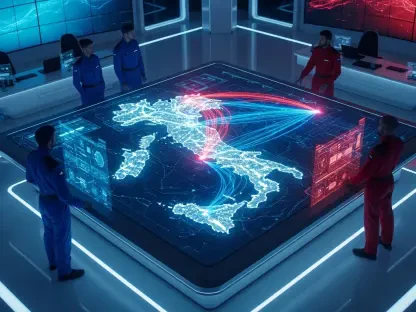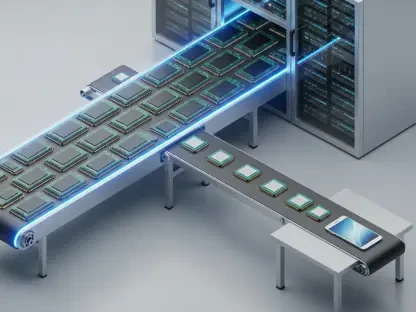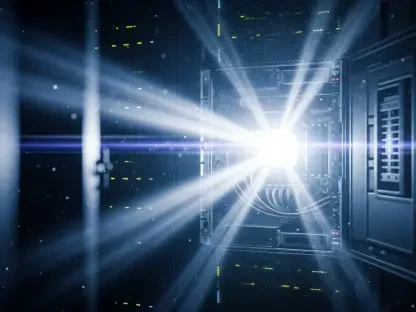As power demand surges alongside renewable energy adoption, utilities are urged to modernize grid infrastructure to ensure uninterrupted delivery and uphold public safety. This modernization entails a dual challenge: integrating advanced grid components and addressing escalating cyber threats. As grid assets become intricately interconnected, potential cyber vulnerabilities multiply, demanding robust strategies and solutions. This environment necessitates adopting a cyber-resilient approach, ensuring the integrity and reliability of utility operations in the face of digital threats. Insights from technology experts offer vital guidance, presenting key principles to foster secure and resilient energy infrastructure. With cyber resilience now central to operational strategy, utilities can navigate the complexities of modernization by embedding security into infrastructure design, ensuring adaptable connectivity, and implementing nuanced defenses. In response to the evolving landscape, utilities are positioned to leverage technological advancements to fortify their systems, integrate evolving connectivity solutions, and streamline operational security measures. This strategic framework not only secures grid operations but also supports a transition to a sustainably digital utility environment.
Embed Cybersecurity into Infrastructure
Utilities must reimagine traditional security measures by integrating cybersecurity directly into their networking infrastructure. This paradigm shift reduces cost, simplifies operations, and enhances overall safety. Ensuring this requires adopting security constructs within networking equipment and establishing wide area network (WAN) infrastructures that are inherently secure and adaptable. Network connectivity demands remain a priority as systems in urban and remote areas must connect numerous smart grid devices using varied technologies. This connectivity must be future-proof, evolving alongside technological advances such as 4G/LTE and the latest iterations of 5G. As these deployments often occur in space-constrained environments, security integration is vital not only to scale effectively but also to ensure robust defenses are in place. Solutions such as industrial routers and ruggedized switches, certified for demanding utility environments, are essential. Embedding cybersecurity capabilities into routers, such as application layer firewalls and Next-Generation Firewalls (NGFWs), allows utilities to dynamically segment networks, ensuring precise control over data flows for heightened security.
Building security directly into networking equipment facilitates deploying advanced security features even in remote locales where traditional appliances might be impractical. The application layer firewall and NGFW capabilities bolster the security of critical infrastructure, offering detailed network segmentation and advanced threat protection. These technologies ensure real-time detection and management of threats across operational networks, supported by integrations with established threat intelligence platforms. By eliminating the need for supplementary appliances, utilities can efficiently secure their networks, accommodating evolving connectivity needs without compromising security. This integrated approach supports centralized policy management, allowing for streamlined administration and heightened security oversight. Utilities can thereby maintain continuous service delivery and escalate anti-cyber measures, providing holistic protection against increasingly sophisticated cyber threats. This strategic embedding of cybersecurity within network infrastructure is fundamental to achieving cyber resilience, presenting opportunities for utilities to enhance operational efficiency while maintaining robust defenses against digital threats.
Employ Zero-Trust Security for Connections
In deploying distributed grid networks, implementing robust security measures where assets physically connect is paramount. Zero-trust security principles are crucial to safeguarding these connections from unauthorized access. The inability to control physical access across various locations necessitates comprehensive security strategies at connection points. Administrative systems can utilize technologies allowing strict control over endpoint access, based on MAC addresses and supported by platforms offering identity and security management at scale. This ensures precise control over endpoint access, mitigating risks associated with unauthorized or malicious connections. Adopting zero-trust principles protects network integrity by verifying device identity before granting access, thereby guarding against potential intrusions and ensuring that only authenticated devices interact with critical systems.
This approach is integral to maintaining operational continuity and preventing unauthorized actions in spaces vulnerable to physical breaches. Utilizing centralized identity and security management platforms, utilities can enhance security protocols across distributed environments, ensuring stringent access control. These measures reduce risks and strengthen defenses by employing precise identification protocols, complemented by advanced technologies that reinforce endpoint security. As utilities integrate zero-trust security principles into their field network operations, they not only bolster infrastructure resilience but also elevate their ability to detect, manage, and neutralize potential cyber threats before they can impact operations. This adaptive security strategy protects critical assets against evolving threat landscapes, establishing formidable defenses that are central to achieving cyber resilience.
Segment Networks for Enhanced Protection
Network segmentation is a crucial strategy for limiting potential breaches by ensuring devices communicate only with essential resources. As devices join the network, security protocols enforce communication limitations, reducing risk by preventing systems from interacting unnecessarily. Isolating essential systems such as power distribution controllers from less sensitive components greatly enhances security. Segmenting networks into distinct virtual zones allows utilities to enhance safety measures by restricting communication paths and minimizing potential disruptions from compromised devices. This segmentation forms part of a comprehensive “defense-in-depth” strategy, providing additional protection even when specific network segments face breaches. Employing security management platforms facilitates defining these segmentation policies, enhancing control across distributed environments.
By creating isolated virtual networks, utilities enhance the security of critical assets by minimizing the spread of malicious activities. Network segmentation strengthens defenses against cyber threats by establishing protective layers around sensitive systems, ensuring comprehensive connectivity without compromising security. Such a strategic approach enables unified oversight, empowering utilities to reinforce security measures through defined policies. As utilities advance segmentation efforts, they elevate operational security while ensuring effective breach management. These principles guide network security by establishing isolated segments that protect against intrusion while maintaining operational integrity. This structured approach to connectivity and security management ensures an efficient and secure grid environment, integral to achieving cyber resilience in modern utility operations.
Centralize Operations for Resilience
Utilities must embrace centralized orchestration and automation to streamline network and security operations across distributed environments. Using advanced management platforms to unify security protocols mitigates potential gaps, fostering comprehensive defenses for scalable grid deployments. Centralized systems enhance network management by allowing automation in deployment, configuration, and maintenance, reducing manual intervention and expediting processes. Automation capabilities ensure consistent policy enforcement and efficient configuration across large-scale networks, paramount for maintaining operational continuity in expansive utility infrastructures. These platforms support automated provisioning for virtual private networks (VPNs), security key management, and tunneling, facilitating seamless operations at scale. By centralizing network governance, utilities can eliminate fragmentation in security management, empowering streamlined operations and fortified defenses.
Enabling centralized management consolidates security and network configurations, promoting operational efficiency while safeguarding critical systems against potential threats. This integration strengthens infrastructure reliability by ensuring coordinated deployment strategies and consistent adherence to security protocols. By optimizing network operations through centralized management frameworks, utilities position themselves to better handle cyber threats, evidenced by resilient defenses and adaptive operational procedures. This streamlined approach not only enhances operational efficiency but also provides robust defenses against evolving cyber threats, maintaining the integrity of grid systems in challenging environments. These measures are essential for utilities facing complex operational demands, ensuring a balanced approach between security and functionality. The integration of centralized orchestration and automation within operational frameworks forms the cornerstone of cyber resilience, empowering utilities to secure their infrastructure effectively and adaptively.
A Strategic Path Forward
As power demand escalates with the adoption of renewable energy, utilities face the imperative to modernize grid infrastructure to ensure consistent service and public safety. This modernization presents a two-pronged challenge: integrating cutting-edge grid components and tackling rising cyber threats. With grid assets becoming intricately linked, cyber vulnerabilities increase, calling for robust strategies. This scenario necessitates a cyber-resilient approach to maintain utility operations’ integrity amidst digital threats. Insights from tech experts offer crucial guidance, outlining key principles to nurture secure energy infrastructures. Cyber resilience is now a core operational strategy, enabling utilities to master modernization complexities by embedding security into design, ensuring adaptable connectivity, and implementing sophisticated defenses. Responding to the evolving landscape, utilities can leverage tech advancements to strengthen systems, incorporate new connectivity solutions, and streamline security measures. This strategic framework secures operations and transitions utilities to a sustainably digital environment.









